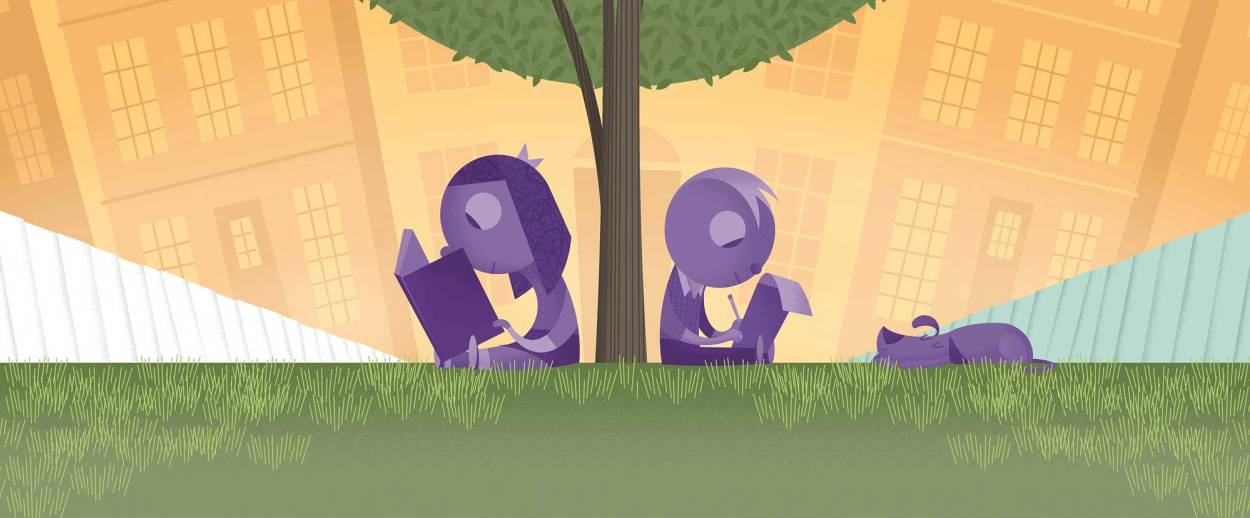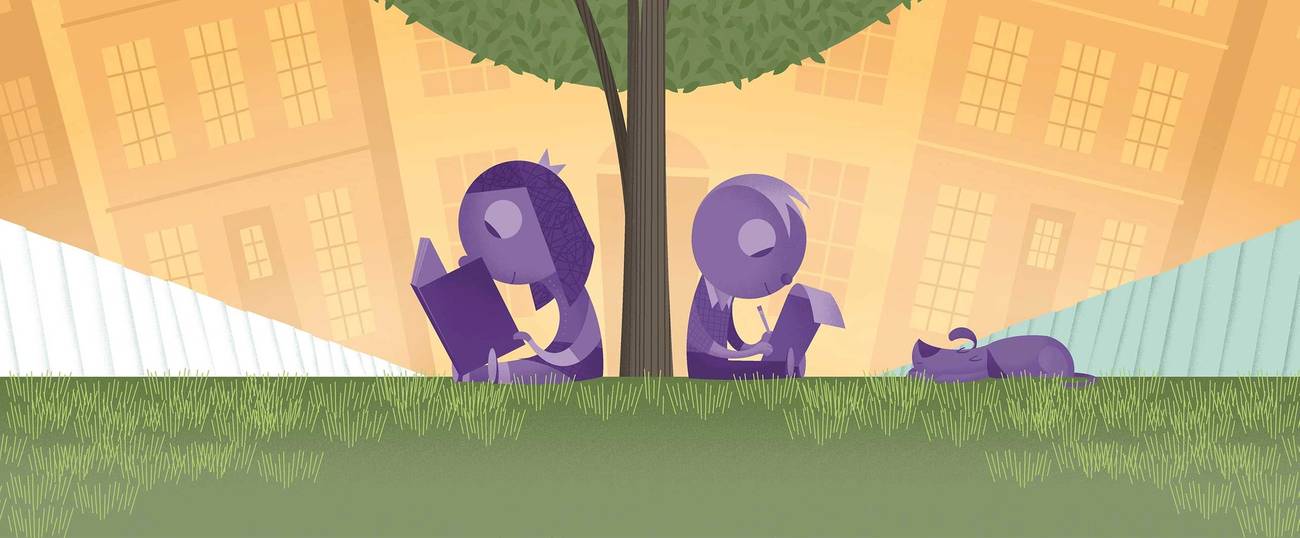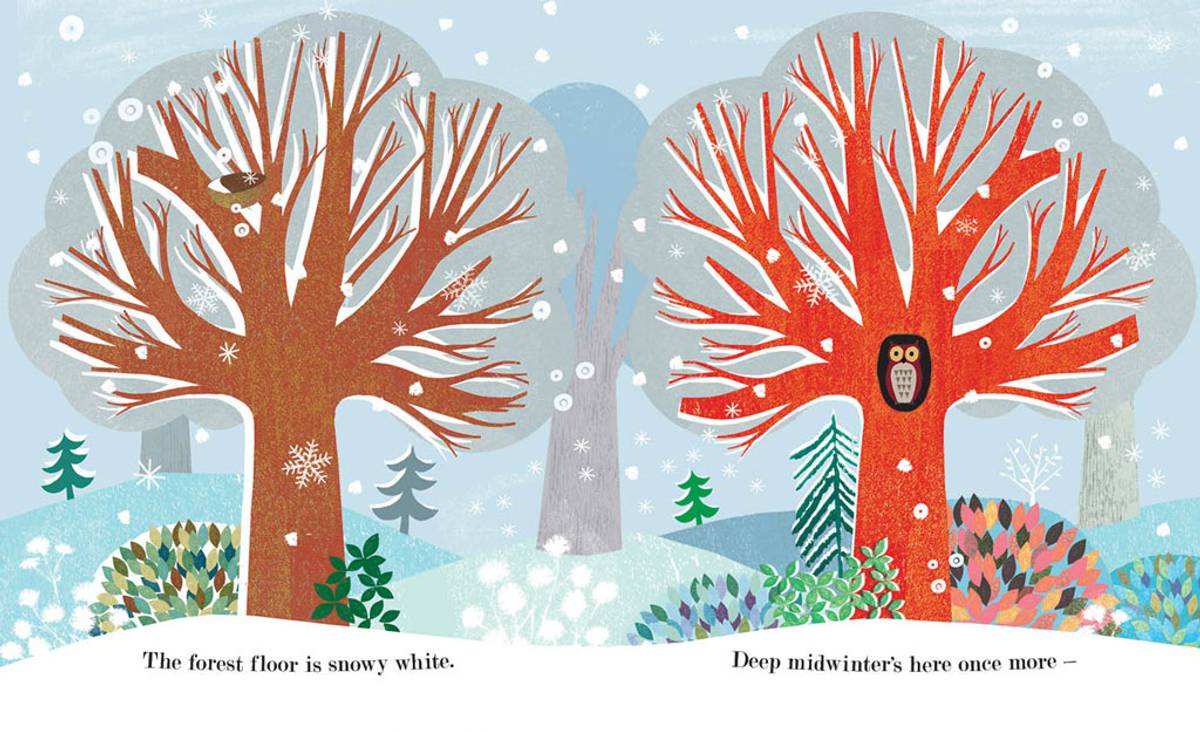Tu B’Shevat Books to Share With Kids
A reading list reflecting the environmentalist values of this underappreciated holiday




The New Year for the Trees starts Sunday night, and there are many ways to celebrate. Go on a walk in the woods! Throw a fruit-and-grain-filled Tu B’Shevat Seder! Whip up some fruity, nutty Tu B’Shevat chocolate bark! Clean up a local park! This year, some Jewish communities are pairing their Tu B’Shevat action with their Martin Luther King Jr. Day of Service, since the holidays happen to fall on the same day. Yay!l
One eternal way to celebrate Tu B’Shevat is by reading environmentally conscious books with kids. Wait, come back! The list I’m going to share with you contains no virtuous, Gore-droning important-yet-hectoring books. Instead, you get the values associated with the holiday—preservation of resources (bal tashchit, “do not destroy”), stewardship of the earth (l’ovdah ul’shomrah, “to till and to tend”), safeguarding the lives of generations to come (pikuach nefesh, “saving a life,” which trumps every other mitzvah)—and complete nonboringness.
Books for little kids
Yeah, yeah, The Lorax. We all know the farshtunkiner Lorax. Let’s find some more obscure choices to speak for the trees, shan’t we?
For the youngest readers, check out It’s Tu B’Shevat by Edie Stoltz Zolkower, illustrated by Richard Johnson. It’s a board book with soothing, folk-arty illustrations, a solid simple rhyme scheme (my pet peeve—one of many, have you met me?—is children’s books with rhymes that don’t scan), and a basic message about how planting a tree is fun—you get to watch it grow! —and good for the planet. (Ages 1 to 3)
Thank You, Trees! by Gail Langer Karwoski and Marilyn E. Gootman, illustrated by Kristen Ballouch, is bright, lively, and cheerful. A diverse group of kids and grown-ups plant trees, pick fruit, have a picnic, and thank the trees. There’s lots of action to gaze at, and the simple rhymes all work. (Ages 2 to 6)
Tree by Becka Teckentrup shows the same tree in different seasons. Holes in the book let little ones peek through the pages to see the ever-changing animal life that visits throughout the year. The rhyming couplets are peaceful (“Birds are singing, foxes play / Summertime is on the way”) but the art is lively and joyful. (Ages 3 to 7)

We Planted a Tree by Diana Muldrow, illustrated by Bob Staake, is perfect for your hipster pals and their spawn. Staake’s geometric, retro-snazzy, expressive and often truly funny art is always a delight, and the text could be a springboard (if you choose) for talking about Nobel Peace Prize-winner and Green Belt Movement founder Wangari Maathai, who said, “When we plant a tree, we plant the seeds of peace and seeds of hope.” (The book is dedicated to her.) Or hey, just enjoy the multiethnic, nonlecturey look at a family in Brooklyn and one in Kenya each planting a tree. Visually irresistible. (Ages 3 to 7)
Because of an Acorn by Lola M. Schaefer and Adam Schaefer, illustrated by Frann Preston-Gannon is a lyrical little prose-poem about the interconnectedness of everything. “Because of an acorn, / a tree. / Because of a tree, / a bird.” The book teaches cause and effect in a pleasurable, cozy, calming way: Birds disperse seeds, seeds lead to fruit, fruit brings animals, animals become prey for other animals. The cycle of life continues. Eye-catching, texturey art is created from digitally manipulated paint and ink illustrations. (Ages 3 to 7)
Books for middle-grade readers
You already know Watership Down. Let’s skip Watership Down. (Yes yes, bunnies are great.)
The Polar Bear Scientists by Peter Lourie is a good choice for a nonfiction-loving kid. Lourie is a nature photographer who gets astounding shots of polar bears in their habitat, and his descriptions of how researchers study the animals without being ripped into teensy bits of scientist confetti is fascinating. It turns out that studying a given polar bear population for 45 years is a great way to learn about our changing climate. There’s all kinds of cool science stuff, the back matter contains info for further reading, and oh, those photos. (Ages 10 to 12)
Hoot, Scat, Chomp, and Flush are a quartet of very funny, over-the-top ecomystery and crime tales for elementary school readers by Carl Hiaasen, who you may know from his writing for grown-ups. (He’s also said, “I’ve never progressed very far from my days as a smart aleck in middle school.”) All four books are set in the Everglades and have a terrific sense of place. If your kid would enjoy reading about poop-dumping floating casinos, sinister oilmen, publicity-hungry fake reality-show survivalists, endangered owls, and thuggish idiots who would have gotten away with it, too, if it weren’t for those meddling kids, they will enjoy these books. (Ages 10 to 13)
Eye of the Storm by Kate Messner is about a girl at a fancy science camp who accidentally discovers that her scientist dad’s research on the weather is far more sinister than she’d ever guessed. The book is set in the near future, when huge tornadoes and thunderstorms and other weather events put the entire planet at risk. Jaden and her friends have to work together to convince her dad to use his work for good. Messner has done her science research, and the book is scary and gripping but not unmanageably so. (Ages 10 to 14)
A book for teenagers
Dry by Neal Shusterman and Jarred Shusterman focuses on five kids in an unnervingly plausible near-future dystopia. A lack of potable water leads to massive wildfires, a shutdown electrical grid, and full-on societal meltdown, all exacerbated by the media’s lousy climate change coverage. (Individual tornadoes and tsunamis make thrilling, eyeball-luring news stories, but sustained reporting on the damage being done to the planet by big businesses and uncaring politicians is way less exciting to cover.) Dry feels absolutely of the moment, an environmental potboiler that’s like a blockbuster movie in paginated form. Reluctant readers may devour it. (Warning: There’s sexual violence and exploitation among other very scary happenings.) (Ages 13 and up)
An out of print book to look for
Pearl Moscowitz’s Last Stand by Arthur Levine is about the kind of fierce old lady a lot of us city dwellers have known and loved, and it feels so specifically menschy and urban and Jewish that I will always have a soft spot for it. It’s easy to find a used copy, so do. When the city wants to chop down the last ginkgo tree on Mrs. Moscowitz’s block, she enlists the neighbors and fights to win. It’s a lovely depiction of growing trees and a changing neighborhood, with new immigrants and old Jews and the power of intersectional collective action. Plus kugel. (Ages 5 to 10)
A book to not read, jeez, oh hell no, what’s wrong with you
The Giving Tree by Shel Silverstein is an ode to dysfunctional relationships, codependency, exploitation, narcissism, entitlement, and toxic martyrdom. If you love this book, you need look at your choices. (If only the Giving Tree had had a Sassy Gay Friend.)
There you go! Do not exploit trees like Silverstein’s asshole Boy. Using them to make good books is OK, though.
Marjorie Ingall is a former columnist for Tablet, the author of Mamaleh Knows Best, and a frequent contributor to the New York Times Book Review.